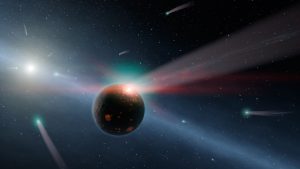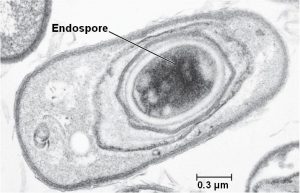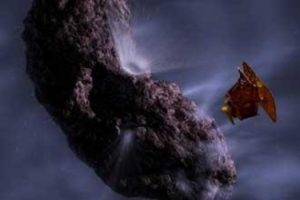Small Beginning from Outer Space
The origin of life on Earth has been pondered and debated by many throughout the ages, and remains a prominent mystery. There have been many hypotheses presented. One that is gaining attention is the panspermia hypothesis, which states that life did not begin on our planet, but rather was transported from somewhere in outer space. This may seem like a ludicrous claim, but evidence of meteorites and the conditions of ancient Earth support the theory that it is likely that life on this planet had a cosmic origin.
The panspermia hypothesis is based on a probability that meteorites and comets housing primitive cells and organic molecules, crashed into our planet and settled here. A period in Earth’s history known as the Late Heavy Bombardment period was characterized by intensive meteor bombardment. This occurred around 4.1 to 3.5 billion years ago. Coinciding with this time frame is the discovery of fossilized bacteria in Australia that has been dated back to 3.5 billion years.

Artist’s rendition of the Late Heavy Bombardment period (credit to NASA)
Can Life Even Exist in Space?
The panspermia hypothesis is challenged by the belief that space is a lifeless void. While it is true that most organisms cannot survive the vacuum of space, there are cases of bacteria surviving in extreme conditions (arctic terrain, volcanic vents, oxygen-free oceans).
To test these limits, scientists at the International Space Station performed an experiment using spore-forming bacteria. They exposed these bacteria to the harsh conditions of space for a few hours, and found that the bacteria managed to survive by encasing themselves in an impenetrable spore that protected its genetic material from the unforgiving space environment. It may be that a variation of these spore-forming bacteria were the first living colonizers of Earth.

Image of a bacterial spore (credit to nicerweb.com)
Life Inside a Meteor
Organic molecules (the building blocks behind proteins and DNA) are found everywhere in our solar system, including primitive Earth. Therefore, there must be something in meteorites that led scientists to believe it is the most likely origin of life on Earth.
In 2005, the Deep Impact Mission probed Comet Tempel 1 and discovered a mixture of organic molecules and clay particles inside. The most interesting property about clay is that it can speed up chemical reactions, such as the reaction in which amino acids (a type of organic molecules) come together to form more complex proteins. These proteins are the structural and functional building blocks behind all life. Although clay did exist on prehistoric Earth, it was far more prevalent in meteors. Therefore, it is more probable that Earth’s first proteins were formed in meteors rather than on the planet. According to researchers at Cardiff University, “The odds of life starting on Earth rather than inside a comet are one trillion trillion to one against.”

Artist’s impression of the Deep Impact comet probe (credit to NASA
The paspermia hypothesis points to meteorites, containing primitive life, crashing into many planets during the Late Heavy Bombardment period, but thriving on Earth because of its ideal atmospheric composition and becoming the planet’s first inhabitants.
Written By: Nathan Chua
